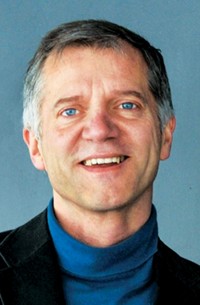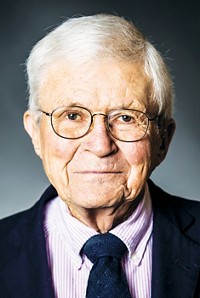Advertisement
Grab your lab coat. Let's get started
Welcome!
Welcome!
Create an account below to get 6 C&EN articles per month, receive newsletters and more - all free.
It seems this is your first time logging in online. Please enter the following information to continue.
As an ACS member you automatically get access to this site. All we need is few more details to create your reading experience.
Not you? Sign in with a different account.
Not you? Sign in with a different account.
ERROR 1
ERROR 1
ERROR 2
ERROR 2
ERROR 2
ERROR 2
ERROR 2
Password and Confirm password must match.
If you have an ACS member number, please enter it here so we can link this account to your membership. (optional)
ERROR 2
ACS values your privacy. By submitting your information, you are gaining access to C&EN and subscribing to our weekly newsletter. We use the information you provide to make your reading experience better, and we will never sell your data to third party members.
Analytical Chemistry
Frank H. Field & Joe L. Franklin Award For Outstanding Achievement In Mass Spectrometry
Sponsored by Waters Corp.
by Celia Henry Arnaud
January 3, 2011
| A version of this story appeared in
Volume 89, Issue 1
Time-of-flight mass spectrometry is today a widespread technique, but that wasn’t always the case. Many of the advantages of TOF that make it useful for biological MS can trace their roots back to Robert J. Cotter, professor of pharmacology and molecular sciences and professor of biophysics and biophysical chemistry at Johns Hopkins University School of Medicine. Cotter, 67, is being honored for his many contributions to the development of TOF MS.
“When Cotter began his research in this field in the late 1970s, biomedical applications of this instrument were few and commercial production had virtually ceased,” says Richard B. van Breemen, professor of medicinal chemistry at the University of Illinois, Chicago. At that time, people thought that laser desorption would only evaporate neutral molecules and that a second step was needed to ionize them. Cotter showed that desorption and ionization could be accomplished simultaneously with a single laser pulse. He proceeded to show that TOF MS makes an ideal companion for pulsed lasers because the technique analyzes ion packets in a similar pulsed manner, van Breemen says.
Much of Cotter’s work in laser desorption served as “an important stepping stone” to developments such as matrix-assisted laser desorption ionization, says James A. Yergey, senior director for preclinical drug metabolism at Merck & Co. in West Point, Pa.
This work provided one of the underpinnings for TOF MS as a workhorse for biological MS. Cotter constructed the first infrared laser desorption TOF mass spectrometer in 1980. In subsequent instruments, he incorporated capabilities such as time-delayed ion extraction, which improved ion focusing. In 1993, he developed the first TOF-TOF instrument by using collision-induced dissociation to fragment molecular ions.
Cotter’s most significant contribution to TOF MS, van Breemen says, is the development of the curved-field reflectron. This device focuses the entire product ion mass range simultaneously. In tandem instruments, it eliminates the need to decelerate precursor ions prior to collision and to reaccelerate the product ions afterward, which allows high collision voltages to be used.
His research now focuses on the development of miniaturized mass spectrometers as portable detectors for biological agents, environmental contaminants, and clinical diagnostics. He is currently developing a low-voltage, low-power ion trap for a mission to Mars.
Cotter received a B.S. in chemistry from the College of the Holy Cross, in Worcester, Mass., in 1965. He received an M.S. in 1971 and a Ph.D. in 1972 in physical chemistry from Johns Hopkins, where he worked with Walter S. Koski.
He did brief stints at Towson University, in Maryland, and Gettysburg College, in Pennsylvania, before returning to Johns Hopkins School of Medicine as a faculty research associate in 1978. In 1981, he became assistant professor of pharmacology and experimental therapeutics. He was promoted to associate professor of pharmacology and molecular sciences in 1986 and to full professor in 1992. In 1994, he received a second appointment as professor of biophysics and biophysical chemistry. He has been director of the Middle Atlantic Mass Spectrometry Laboratory since 1987.
Cotter will present the award address before the Division of Analytical Chemistry during the fall ACS national meeting.





Join the conversation
Contact the reporter
Submit a Letter to the Editor for publication
Engage with us on Twitter